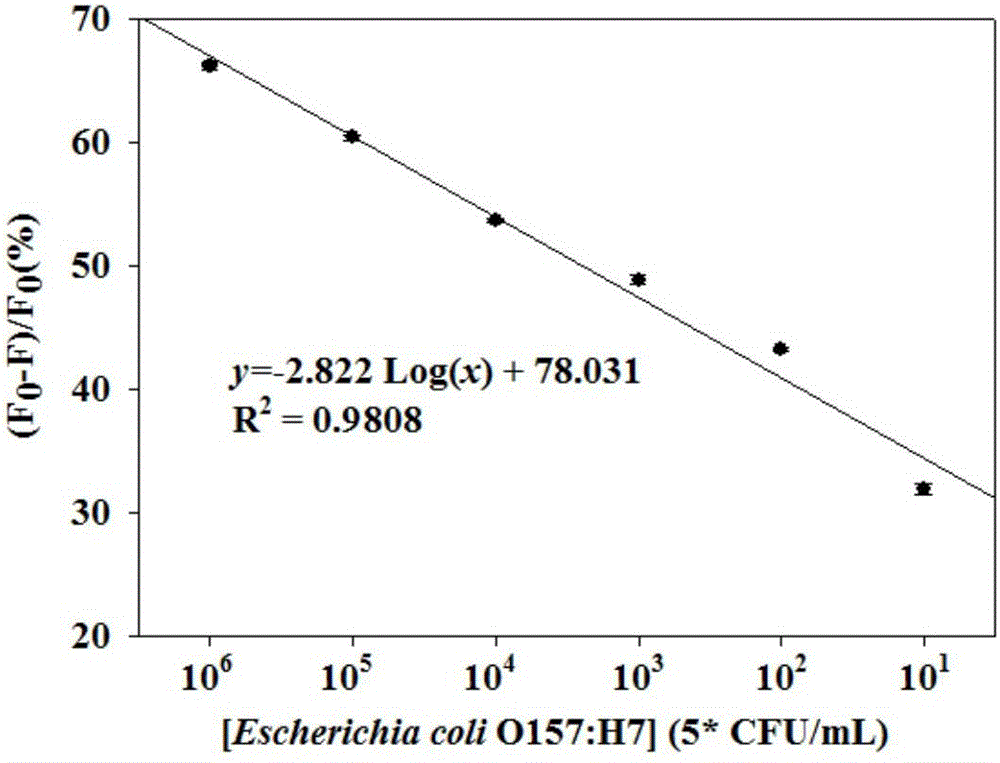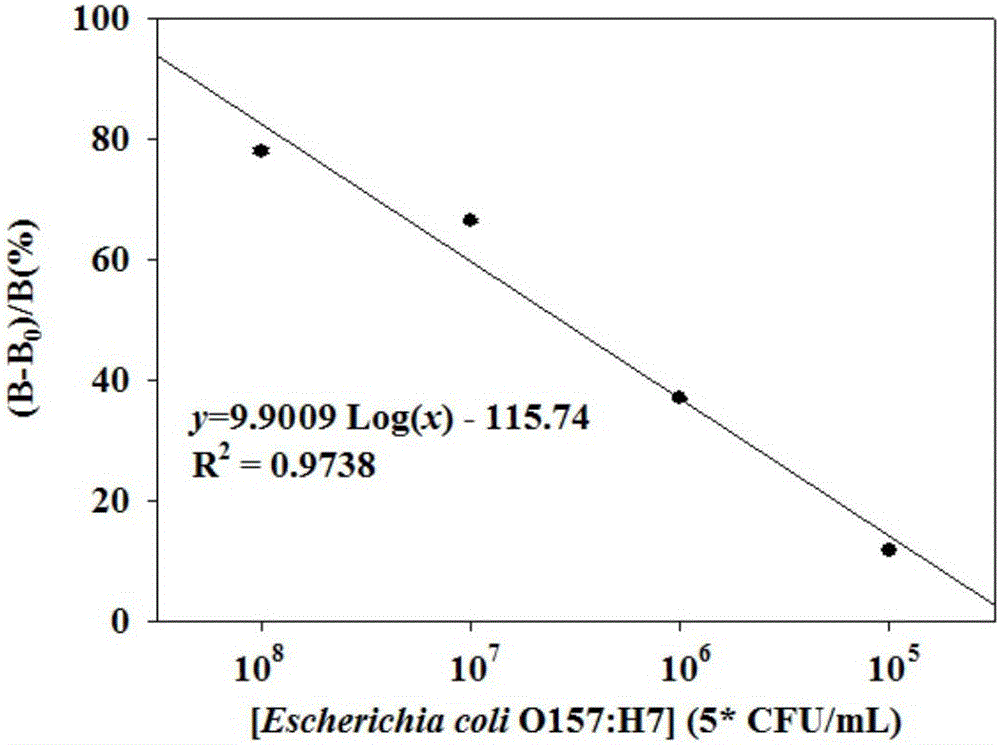Method for detecting escherichia coli O157:H7
A technology of O157 and Escherichia coli, applied in the field of microbial detection, can solve problems such as low precision, and achieve the effect of saving cost and improving detection sensitivity
- Summary
- Abstract
- Description
- Claims
- Application Information
AI Technical Summary
Problems solved by technology
Method used
Image
Examples
Embodiment 1
[0050] Example 1 (Application of the novel fluorescent ELISA detection method for detection of Escherichia coli O157:H7 in lettuce in the present invention)
[0051] When the novel fluorescent ELISA detection method of the present invention is used to detect the content of Escherichia coli O157:H7 in lettuce, it is implemented through the following steps: sample pretreatment, detection by the detection method of the present invention, and analysis of results.
[0052] (1) Sample pretreatment
[0053] Take 1g of the processed lettuce sample, add it to 9ml of sterile PBS, then add 1ml of bacterial solution, shake vigorously for 30 minutes; take the supernatant and add immunomagnetic beads to enrich and concentrate to 1mL liquid, take it out for later use.
[0054] (2) detect Escherichia coli O157:H7 content in the above-mentioned sample with detection method of the present invention
[0055] Take the enzyme label coated with polyclonal antibody against Escherichia coli O157:H7 ...
Embodiment 2
[0067] Example 2 (Escherichia coli O157: H7 ELISA detection method using horseradish peroxidase as antibody labeling enzyme and TMB as chromogenic substrate)
[0068] When the traditional ELISA detection method is used to detect the content of E. coli O157:H7 in lettuce and beef products, it is implemented through the following steps: sample pretreatment, detection by traditional ELISA detection method, and analysis of the results.
[0069] (1) Sample pretreatment
[0070] Take 1g of the processed lettuce sample, add it to 9ml of sterile PBS, then add 1ml of bacterial solution, shake vigorously for 30 minutes; take the supernatant and add immunomagnetic beads to enrich and concentrate to 1mL liquid, take it out for later use.
[0071] (2) Use the traditional ELISA detection method to detect the content of E. coli O157:H7 in the above samples
[0072] Take the enzyme label coated with polyclonal antibody against Escherichia coli O157:H7 content, add standard substance / sample 1...
Embodiment 3
[0078] The invention relates to a detection method for Escherichia coli O157:H7, which belongs to the double-antibody sandwich enzyme-linked immunosorbent method, and the method is for the detection of Escherichia coli O157:H7 antigen, and the enzyme used for labeling the antibody in the method is catalase C100.
[0079] On the basis of the above technical solutions, the following conditions are met:
[0080] The substrate in the method includes hydrogen peroxide and mercaptopropionic acid modified cadmium telluride quantum dots.
[0081] The specific detection method includes the following steps:
[0082] 1) Escherichia coli O157:H7 antibody coated;
[0083] 2) Take the coated antibody in step 1), mix it with the sample to be tested, react in a light-proof environment at 35°C for 40 minutes, and wash;
[0084] 3) Then add biotinylated Escherichia coli O157:H7 monoclonal antibody to mix, react at 35°C in a dark environment for 40min, and wash;
[0085] 4) Then add streptavi...
PUM
| Property | Measurement | Unit |
|---|---|---|
| Concentration | aaaaa | aaaaa |
| Concentration | aaaaa | aaaaa |
| Concentration | aaaaa | aaaaa |
Abstract
Description
Claims
Application Information
 Login to View More
Login to View More - R&D
- Intellectual Property
- Life Sciences
- Materials
- Tech Scout
- Unparalleled Data Quality
- Higher Quality Content
- 60% Fewer Hallucinations
Browse by: Latest US Patents, China's latest patents, Technical Efficacy Thesaurus, Application Domain, Technology Topic, Popular Technical Reports.
© 2025 PatSnap. All rights reserved.Legal|Privacy policy|Modern Slavery Act Transparency Statement|Sitemap|About US| Contact US: help@patsnap.com



